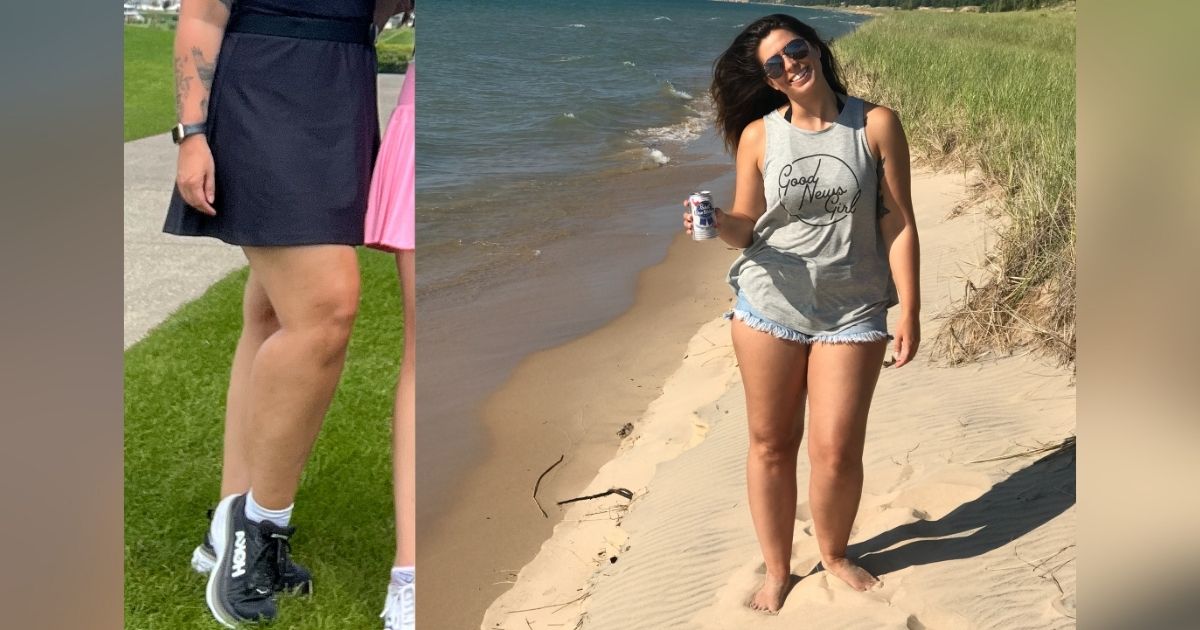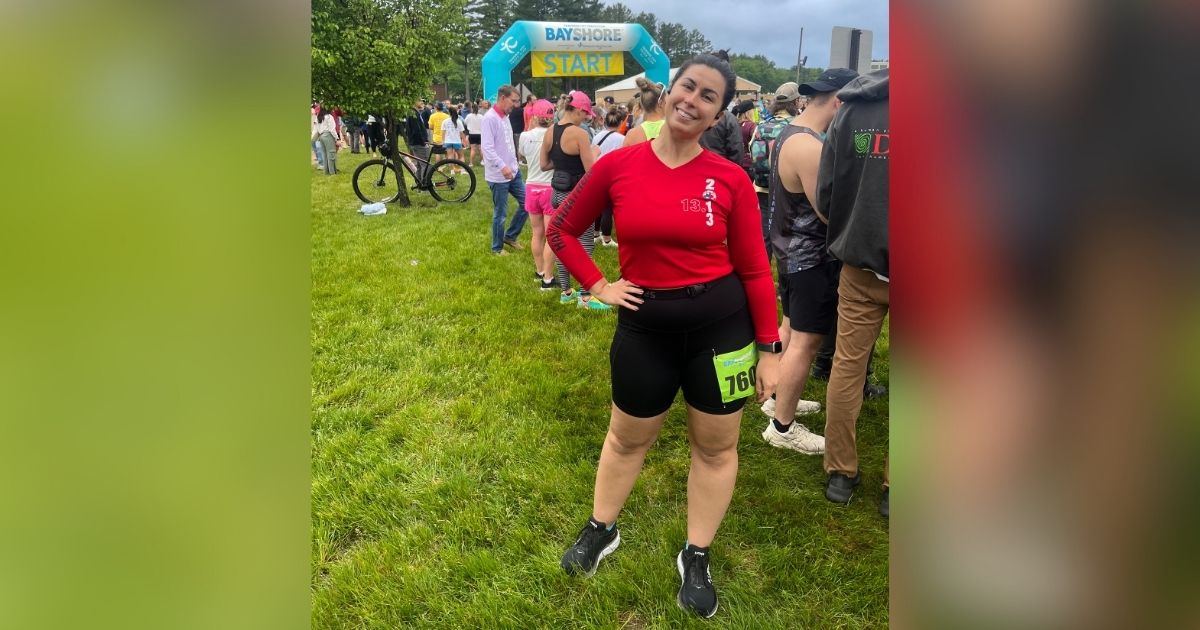Never heard of lipedema? You're not alone.
Since puberty, I'd always been keenly aware that my legs were different from my peers. I've even written about the topic before and my acceptance of them, especially during shorts season. Having grown up as a competitive athlete, I always attributed their thicker appearance to having more muscle, or that it was simply genetics and cellulite.
What I didn't know at the time was that I have lipedema—a chronic medical condition primarily affecting women that's characterized by a bilateral, symmetric buildup of adipose tissue most commonly presenting itself in the lower extremities, sparing the feet and hands. This tissue is not only tender and painful (which is punishment enough in itself), but it's resistant to diet and exercise unlike normal fat.
Yep, you read that right. You could run yourself around the world and back while eating the most nutritious meals and lipedema fat will not budge. (Rude.)
My awareness of this condition began thanks to a TikTok. During my normal doom scroll, an athletic woman around my age (30-35ish) was showing her legs and asking, "Do your legs look like mine?" I nodded to myself as I watched the video in bed. "Then you might have lipedema."
What?!
I'd never heard of the condition, but immediately upon learning some of its hallmarks, fell down the rabbit hole. My brain lit up like a Christmas tree. I had lipedema. I knew it in my bones. This finally explained all the years of wonder, confusion, frustration, and self-hatred of my body for not doing what I was desperately telling it to do since I was 12.
Suddenly, all the moments when I felt like my body wasn't "meant" to do something made sense. The fatigue, the incredible feeling of heaviness, the unexplained bruising, the visible (and painful) nodules under my skin, the swelling, how I could lose weight everywhere but my legs ... all of it fell into place. Lipedema was the culprit, all these years.

SOME QUICK LIPEDEMA FACTS:
- There are different types of lipedema, with some affecting just lower legs, just uppers, both, and sometimes arms. There are also different stages (or grades), indicating how progressed the condition is.
- Legs with lipedema often have a column-like appearance and lack definition, with "cuffing" present at the ankle. Another hallmark are the fat pads on the inner knee—often the most tender spot for women with lipedema.
- Diagnosis is done through a physical exam, as no imaging tests or biomarkers currently exist as a means for diagnosis.
- Though experts are still unsure of what causes lipedema, it's believed to be genetic and is known to be exacerbated by hormonal changes such as puberty, pregnancy, and menopause.

Many doctors haven't heard of the condition, or confuse it with lymphedema, a completely different condition, or worse ... just tell women who know in their heart that something isn't right to "just lose weight."
Hadn't thought of trying that, thanks.
I was given a formal diagnosis by Dr. Celia Egan at true. Women's Health in Grand Rapids, one of the few medical facilities around the country that specializes in diagnosing this condition. Getting a formal diagnosis was an incredibly validating (albeit emotional) experience, but I finally felt equipped with the knowledge and options for a pathway forward. I'll forever be thankful to Dr. Egan for that.
Lipedema is a progressive condition with no cure. Its effects on one's quality of life both physically and mentally can be incredibly significant over time. And while conservative treatments exist, the only way to physically remove lipedema from your body once it's there is through surgery. It's because of this that I've made the choice to pursue surgical reduction of my lipedema with the experts at Lipemedical in Madrid, Spain.
So ... why Spain?
In short: Affordable cost, world-class expertise, and real-world results from women I could see and converse with.
Led by Chief Surgeon Dr. Burgos de la Obra, the surgeons at Lipemedical are pioneers in the specific type of surgery required for proper and lasting results. And, it's all they do. In the U.S., similar surgical procedures—even though they're medically necessary—are often not covered by insurance (and those who are lucky enough to get them covered go to hell and back to make it so). These procedures are also about four times as expensive in America, should you simply pay out of pocket. Not only was that particular fight unappealing to me, but Lipemedical's extensive expertise, life-changing success stories and reasonable pricing made it so this could truly be a reality within reach for me. (Surgery in the U.S. exists, but is often out of reach for many, like myself.)
I've since had the pleasure of connecting with numerous women from around the world who have lipedema and have sought out surgical treatment in Madrid. From packing tips and compression questions and links to Airbnbs, to sharing the raw and real peaks and valleys of recovery, these women are incredible. They're open and honest about their own journeys because, much like me, they felt seen upon discovering that one piece of content that helped them piece it all together. I never thought I'd be regularly conversing with women in New Zealand, Australia, Ireland, the U.K., Dubai, Canada, and more about my legs and all the little nuances and commonalities we all share, but here we are. And I'm thankful for each and every one of them.
My first of three surgeries will be in September 2025, with the second and third taking place in early 2026 (specifically with Lipemedical's Dr. Garcia-Reyes). Am I nervous having multiple major surgeries abroad? Yes. Are my family and friends supportive? 100% Yes. Have I shared my understandable nervousness with the women in my little online lipedema community? Yes. Among those women who've already been through the entire process, there's an overwhelming response to being asked whether they'd do it all over again:
"Yes, in a heartbeat, every single time."
This resounding feedback is why I'm confident I'm making the right choice for my future self—the future me who still enjoys running, going for long walks, being on my feet without punishment, and having the privilege of full mobility as I age. I'll always have lipedema, but surgery will "set me back to zero," and that's more than worth it in my eyes.
Lipedema—though lacking in awareness amongst the public and the broader medical community—is not rare. In fact, it's estimated that 11% of women globally have the condition and are often misdiagnosed with other conditions like obesity. My hope is by sharing my own discovery and journey, I can add to the ongoing discourse of women already working to raise awareness and hopefully allow other women who've been desperate for answers for years to find their own lightbulb moment.
I'll be writing more about the journey here, in addition to sharing on Instagram at @sarah_lipedema. I hope you'll follow along!
HELPFUL RESOURCES:
- Lipedema Foundation
- "Lipedema's Invisible Toll" Harvard Health Publishing
- The Lipedema Project
- Lipedema Mamas Podcast
Written by Sarah Suydam, Managing Editor for West Michigan Woman.
Photos courtesy of Sarah Suydam.




